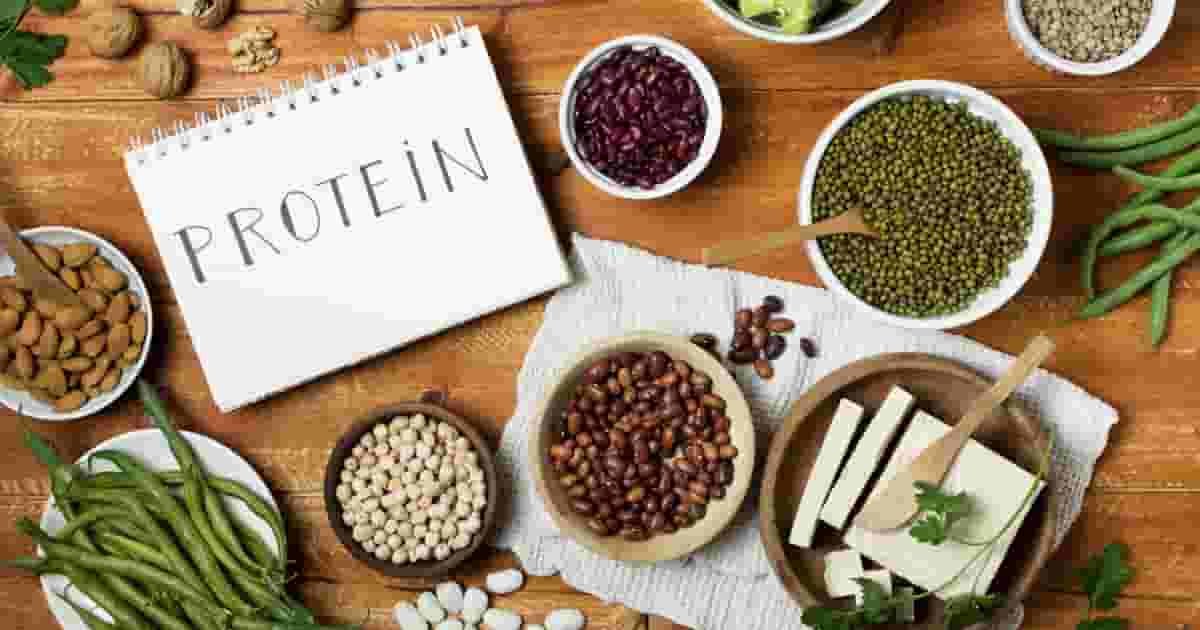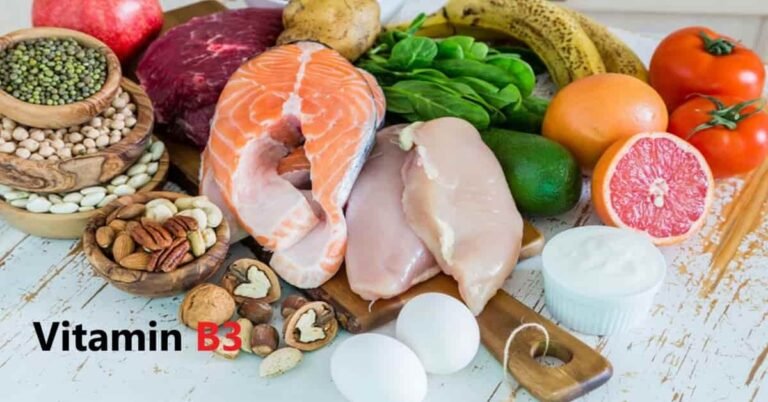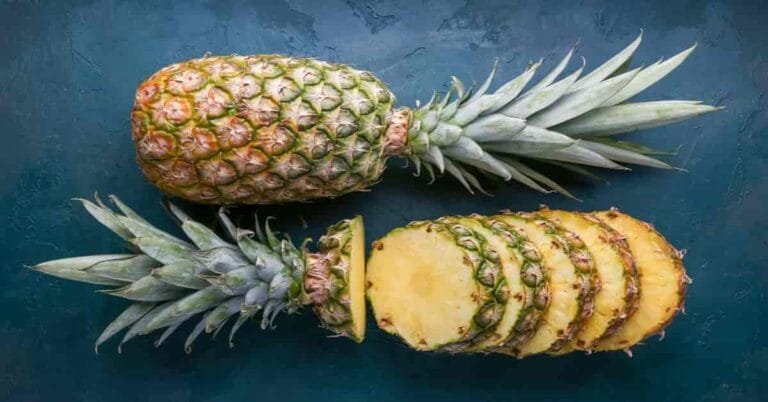19 Plant-Based Protein Sources Chart. The rising popularity of plant-based diets has sparked a greater awareness of protein intake and where to find it outside of traditional animal sources. While meat, eggs, and dairy have long been considered protein staples, a wealth of delicious and nutritious plant-based options are readily available. This guide will explore 19 fantastic plant-based protein sources, complete with nutritional information and practical tips to help you incorporate them into your meals. Think of this as your ultimate resource for building a protein-rich, plant-powered diet!
Why Focus on Plant-Based Protein?
Before diving into the list, let’s briefly touch on why embracing plant-based protein is beneficial:
- Health Benefits: Plant-based diets are often associated with a lower risk of heart disease, type 2 diabetes, certain cancers, and obesity. They are typically lower in saturated fat and cholesterol, and higher in fiber, vitamins, and minerals.
- Environmental Impact: Plant-based agriculture generally has a lower environmental footprint than animal agriculture, requiring less land, water, and energy.
- Ethical Considerations: For many, choosing plant-based protein is a conscious decision rooted in ethical concerns about animal welfare.
- Dietary Variety: Exploring plant-based options expands your culinary horizons and introduces you to a wider range of flavors and textures.
Understanding Complete vs. Incomplete Proteins
A complete protein contains all nine essential amino acids – the building blocks of protein that our bodies cannot produce on their own. Animal proteins are generally complete. Many plant-based proteins are considered “incomplete” because they are low in one or more essential amino acids.
However, this shouldn’t discourage you! By eating a varied diet with a mix of plant-based proteins, you can easily obtain all the essential amino acids your body needs. This is known as “protein combining” or “complementary proteins.” For example, pairing beans (low in methionine) with rice (low in lysine) provides a complete amino acid profile.
The 19 Plant-Based Protein Powerhouses
Now, let’s delve into our comprehensive list, including a detailed chart for quick reference:
19 Plant-Based Protein Sources Chart
| Source | Oatmeal, granola, baking, smoothies, and overnight oats | Complete Protein? | Notable Nutrients | Best Ways to Use |
|---|---|---|---|---|
| 1. Soybeans (Cooked) | 17g | Yes | Iron, Calcium, Vitamin K, Fiber, Isoflavones | Edamame, stir-fries, soups, stews, tofu, tempeh |
| 2. Tofu | 8g | Yes | Iron, Calcium, Magnesium, Manganese | Steaming, salads, and snacking |
| 3. Tempeh | 19g | Yes | Iron, Calcium, Manganese, Prebiotics, Fiber | Marinating and baking, stir-fries, sandwiches, burgers, crumbles for sauces |
| 4. Edamame | 11g | Yes | Iron, Calcium, Vitamin K, Fiber, Folate | Chili, stews, salads, rice, and beans |
| 5. Lentils (Cooked) | 9g | No | Iron, Folate, Fiber, Potassium, Polyphenols | Soups, stews, salads, curries, lentil loaf, lentil burgers |
| 6. Chickpeas (Cooked) | 7g | No | Iron, Folate, Fiber, Phosphorus, Manganese | Hummus, salads, roasting, stews, curries, falafel, chickpea flour (besan) |
| 7. Black Beans (Cooked) | 9g | No | Iron, Folate, Fiber, Antioxidants, Magnesium | Soups, stews, salads, burritos, tacos, black bean burgers |
| 8. Kidney Beans (Cooked) | 9g | No | Iron, Folate, Fiber, Antioxidants, Manganese | Smoothies, salads, yogurt, oatmeal, baking, and sprinkled on meals |
| 9. Quinoa (Cooked) | 4.4g | Yes | Iron, Magnesium, Fiber, Manganese, B Vitamins | Salads, bowls, as a rice substitute, breakfast porridge, in soups |
| 10. Hemp Seeds | 31g | Yes | Omega-3 & 6 Fatty Acids, Magnesium, Zinc, Iron, Fiber | Snacking, salads, pesto, baking, and granola |
| 11. Chia Seeds | 17g | No | Omega-3 Fatty Acids, Fiber, Calcium, Iron, Antioxidants | Chia pudding, smoothies, yogurt, oatmeal, baking, egg replacement (chia eggs) |
| 12. Pumpkin Seeds | 24g | No | Magnesium, Zinc, Iron, Copper, Antioxidants | Snacking, almond butter, baking, salads, and almond milk |
| 13. Sunflower Seeds | 21g | No | Vitamin E, Magnesium, Selenium, Copper, Iron | Snacking, salads, bread, granola, sunflower seed butter |
| 14. Almonds | 21g | No | Vitamin E, Magnesium, Calcium, Fiber, Healthy Fats | Snacking, peanut butter, Asian-inspired dishes, and sauces |
| 15. Peanuts | 26g | No | Niacin, Folate, Manganese, Vitamin E, Healthy Fats | Oatmeal, granola, baking, smoothies, and overnight oats |
| 16. Nutritional Yeast | 45-55g | Yes | B Vitamins (often fortified), Protein, Minerals | Cheesy flavor for sauces, sprinkled on popcorn, pasta, or vegetables, used in vegan “cheese” recipes |
| 17. Spirulina | 57g | Yes | B Vitamins, Iron, Copper, Antioxidants, Protein | Smoothies, juices, sprinkled on meals (use sparingly due to strong flavor) |
| 18. Whole Grain Bread (Whole Wheat) | 13g (per 100g) | No | Fiber, Iron, B Vitamins | Sandwiches, toast, used as a base for other dishes |
| 19. Oats (Rolled, Dry) | 17g | No | Fiber, Manganese, Iron, Magnesium, Zinc | Oatmeal, granola, baking, smoothies, overnight oats |
Detailed Look at Each Source:
Now, let’s dive a little deeper into each of these plant-based protein sources:
1. Soybeans (Cooked): The Versatile Bean
Soybeans are a complete protein and a powerhouse of nutrients. They are the foundation for various soy-based products like tofu, tempeh, and edamame. Soybeans also contain isoflavones, which are plant compounds that have been linked to various health benefits.

- Tips for Use: Experiment with different soy-based products to find your favorites. Edamame is a simple and satisfying snack, while tofu and tempeh can be incorporated into countless dishes.
2. Tofu: The Protein Chameleon
Tofu is made from coagulated soy milk pressed into blocks. It’s a blank canvas that readily absorbs flavors, making it incredibly versatile. Tofu is also a complete protein.

- Tips for Use: Choose firm or extra-firm tofu for grilling and baking. Silken tofu is ideal for smoothies and creamy sauces. Press tofu before cooking to remove excess water for a crispier texture.
3. Tempeh: The Fermented Powerhouse
Tempeh is made from fermented soybeans pressed into a firm, chewy cake. The fermentation process increases its nutritional value and digestibility. Like tofu, tempeh is a complete protein.

- Tips for Use: Marinate tempeh before cooking to infuse it with flavor. It can be grilled, baked, stir-fried, or crumbled into sauces.
4. Edamame: The Steamed Snack
Edamame are immature soybeans harvested before they harden. They are typically steamed or boiled and enjoyed as a snack. Edamame provides a complete protein and is a good source of fiber.

- Tips for Use: Sprinkle edamame with sea salt or spices for added flavor. Add it to salads or stir-fries for a protein boost.
5. Lentils (Cooked): The Humble Legume
Lentils are a type of legume that comes in various colors, including green, red, and brown. They are a good source of protein, fiber, and iron. While not a complete protein on their own, pairing them with grains like rice makes for a complete amino acid profile.

- Tips for Use: Lentils cook relatively quickly, making them a convenient option for weeknight meals. They are delicious in soups, stews, and salads.
6. Chickpeas (Cooked): The Creamy Delight
Chickpeas, also known as garbanzo beans, are another versatile legume. They are the main ingredient in hummus and are a good source of protein and fiber. Similar to lentils, they are not a complete protein but can be easily combined with other plant-based foods.

- Tips for Use: Roast chickpeas with spices for a crunchy snack. Use chickpea flour (besan) to make vegan pancakes or fritters.
7. Black Beans (Cooked): The Southwestern Staple
Black beans are a popular ingredient in Southwestern cuisine. They are a good source of protein, fiber, and antioxidants. They complement rice and other grains to create a complete protein.

- Tips for Use: Add black beans to tacos, burritos, or salads. Use them to make black bean burgers or chili.
8. Kidney Beans (Cooked): The Classic Bean
Kidney beans are named for their kidney-like shape. They are a good source of protein, fiber, and iron. As with other beans, they’re incomplete but work well in combination with grains.

- Tips for Use: Use kidney beans in chili, stews, or rice and beans dishes.
9. Quinoa (Cooked): The Ancient Grain
Quinoa is a complete protein, making it a valuable addition to any plant-based diet. It’s also a good source of fiber and minerals. While technically a seed, it’s often referred to as a grain.

- Tips for Use: Cook quinoa in broth for added flavor. Use it as a rice substitute or in salads.
10. Hemp Seeds: The Nutrient-Rich Seed
Hemp seeds are a complete protein and an excellent source of omega-3 and omega-6 fatty acids. They have a mild, nutty flavor.

- Tips for Use: Sprinkle hemp seeds on smoothies, salads, or yogurt. Add them to baked goods for a protein boost.
11. Chia Seeds: The Tiny Powerhouse
Chia seeds are packed with fiber, omega-3 fatty acids, and antioxidants. While not a complete protein on their own, they offer a significant nutritional boost.

- Tips for Use: Make chia pudding by soaking chia seeds in milk or yogurt. Add them to smoothies or use them as an egg replacement in baking.
12. Pumpkin Seeds: The Crunchy Snack
Pumpkin seeds are a good source of protein, magnesium, and zinc. They have a mild, nutty flavor and are a satisfying snack. They are an incomplete protein.

- Tips for Use: Roast pumpkin seeds with spices for a flavorful snack. Add them to salads or granola.
13. Sunflower Seeds: The Versatile Seed
Sunflower seeds are a good source of protein, vitamin E, and selenium. They can be enjoyed as a snack or added to various dishes. They are an incomplete protein source.

- Tips for Use: Sprinkle sunflower seeds on salads or bread. Make sunflower seed butter as a peanut butter alternative.
14. Almonds: The Nutty Delight
Almonds are a good source of protein, healthy fats, and vitamin E. They are a popular snack and a versatile ingredient. Almonds are an incomplete protein.

- Tips for Use: Enjoy almonds as a snack, add them to salads, or use almond butter in smoothies.
15. Peanuts: The Legume Pretending to be a Nut
Peanuts are technically legumes, not nuts, but they are often grouped with nuts due to their similar nutritional profile. They are a good source of protein, healthy fats, and niacin. Peanuts provide incomplete protein.

- Tips for Use: Enjoy peanuts as a snack, use peanut butter in sandwiches or smoothies, or add peanuts to Asian-inspired dishes.
16. Nutritional Yeast: The Cheesy Flavor Savior
Nutritional yeast is a deactivated yeast with a cheesy, nutty flavor. It is often fortified with B vitamins and is a complete protein. It’s a favorite among vegans for its ability to mimic cheese.

- Tips for Use: Sprinkle nutritional yeast on popcorn, pasta, or vegetables. Use it to make vegan cheese sauces or dips.
17. Spirulina: The Algae Boost
Spirulina is a blue-green algae that is a complete protein and a rich source of nutrients. It has a strong, slightly fishy flavor, so use it sparingly.

- Tips for Use: Add spirulina to smoothies or juices. Use it in small amounts due to its potent flavor.
18. Whole Grain Bread (Whole Wheat): The Carbohydrate Choice
While often considered primarily a carbohydrate source, whole grain bread, particularly whole wheat, offers a decent amount of protein and valuable fiber. It’s not a complete protein.

- Tips for Use: Choose whole-grain bread over white bread for added fiber and nutrients. Pair it with other protein sources for a balanced meal.
19. Oats (Rolled, Dry): The Breakfast Staple
Oats are a good source of fiber and protein, making them a healthy and filling breakfast option. They are an incomplete protein source.

- Tips for Use: Enjoy oatmeal with fruit and nuts, add oats to granola, or use them in baking.
Practical Tips for Incorporating Plant-Based Protein
- Start Small: Gradually incorporate more plant-based meals into your diet.
- Plan Ahead: Plan your meals and snacks to ensure you’re getting enough protein.
- Experiment with Recipes: Try new recipes that feature plant-based protein sources.
- Read Labels: Pay attention to the protein content of packaged foods.
- Listen to Your Body: Adjust your protein intake based on your individual needs and activity level.
- Don’t Be Afraid of Combinations: Remember, combining different plant-based proteins throughout the day will ensure you get all the essential amino acids you need.
Conclusion
Embracing plant-based protein offers a wealth of health, environmental, and ethical benefits. With so many delicious and nutritious options available, it’s easier than ever to create a protein-rich, plant-powered diet. Use this guide as your starting point, and explore the wonderful world of plant-based protein! Remember to focus on variety and enjoy the journey of discovering new and exciting flavors. Happy eating!
That was all about 19 Plant-Based Protein Sources. | Read below the FAQs about 19 Plant-Based Protein Sources
- Lady Gaga’s Gothic Fever and Coachella 2025 Highlights | Best moment
- Top 37 Cool Tech Gadgets for 2025, According to a Tech Expert
- What is Sex Transmutation
- Internet Trolling: Understanding the Psychology and Impact
- Dark Psychology: Exploring the Hidden Influences Behind Human Behavior
- Read about Health in Hindi
Some FAQs about 19 Plant-Based Protein Sources
Here are 20 frequently asked questions (FAQs) about 19 plant-based protein sources:
- What are some common plant-based sources of protein?
Legumes (beans, lentils, chickpeas), tofu, tempeh, seitan, quinoa, edamame, nuts, seeds, and whole grains. - Are plant-based proteins complete proteins?
Some, like quinoa and soy, are complete proteins. Others may need to be combined (e.g., rice and beans) to provide all essential amino acids. - How much protein do I need daily?
The general recommendation is 0.8 grams per kilogram of body weight, but needs vary based on activity level and health goals. - Can I get enough protein from a vegan diet?
Yes, with a varied diet that includes a mix of legumes, grains, nuts, and seeds. - What are the benefits of plant-based proteins?
They’re often lower in saturated fat, rich in fiber, and contain beneficial phytochemicals. - Are plant-based proteins suitable for athletes?
Absolutely! Many athletes successfully meet their protein needs with plant-based sources. - How do plant proteins compare to animal proteins?
Animal proteins are complete and often higher in certain amino acids; however, many plant proteins can meet nutritional needs with proper planning. - What is the best plant-based source for vegans?
Tofu, tempeh, and seitan are excellent options due to their high protein content. - Are soy products healthy?
Yes, when consumed as part of a balanced diet, soy products like tofu and edamame are healthy and nutrient-rich. - Can I build muscle on a plant-based diet?
Yes, with adequate total protein intake and proper timing of meals. - Do plant-based proteins contain all essential amino acids?
Some do, like soy and quinoa. Others may need to be combined during the day. - What are good plant-based snacks high in protein?
Nuts, seeds, hummus with veggies, roasted chickpeas, or vegan protein bars. - Is pea protein a good alternative?
Yes, pea protein is a high-quality, easily digestible source of plant protein. - How do I incorporate more plant proteins into my diet?
Add beans to salads, use nut butters on toast, replace meat with tofu or tempeh, and experiment with grains like quinoa. - Are there any potential drawbacks to plant-based proteins?
Some may have antinutrients or cause digestive issues in sensitive individuals. Also, requires variety to meet all amino acid needs. - Can plant-based proteins help with weight management?
Yes, they are often lower in calories and high in fiber, aiding satiety. - What’s the environmental benefit of choosing plant-based proteins?
They typically require fewer resources and emit fewer greenhouse gases than animal proteins. - Are there any allergies associated with plant-based proteins?
Nuts, seeds, soy, and gluten-containing grains can cause allergies in some. - What’s the best way to ensure I’m getting enough protein on a plant-based diet?
Track your intake initially, include a variety of sources, and consult with a nutritionist if needed. - Can I use plant-based proteins in cooking and baking?
Absolutely! Many plant proteins, like flour made from chickpeas or hemp seeds, are versatile in recipes.
So these were some questions and answers about 19 Plant-Based Protein Sources.



